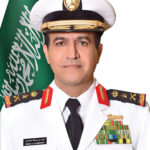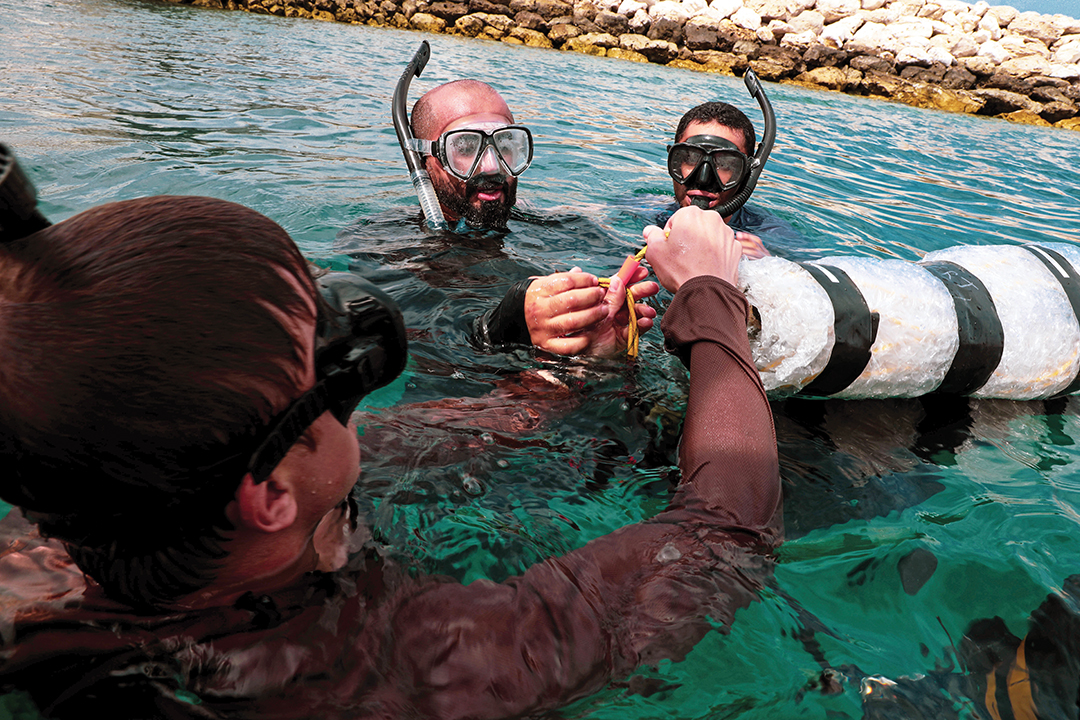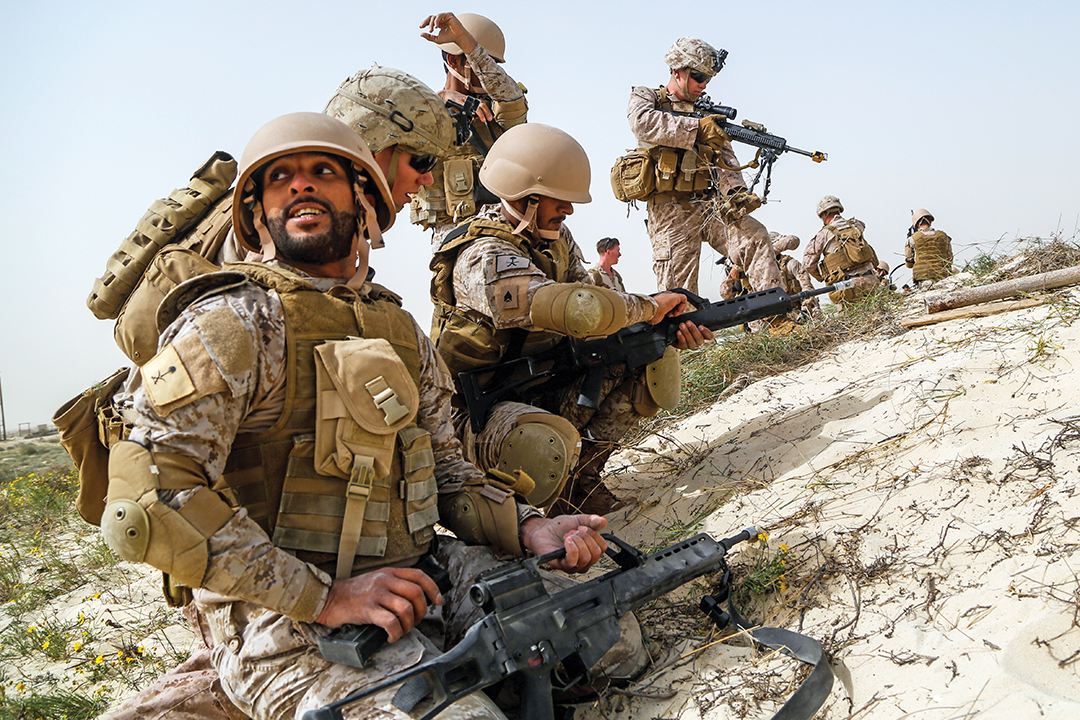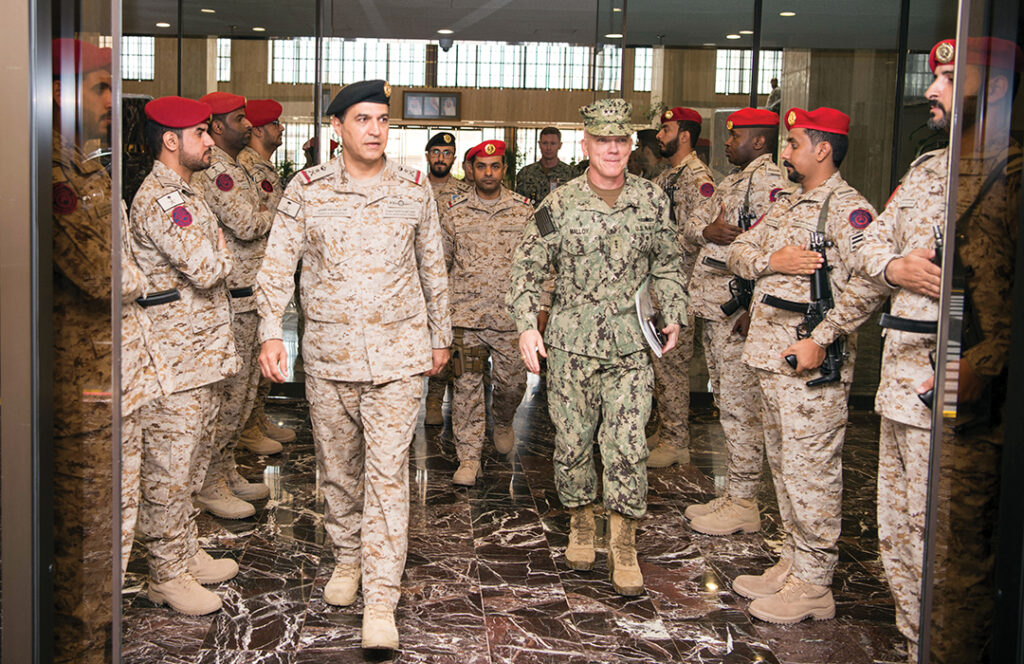Vice Adm. Fahad Al-Ghofaily has spearheaded the modernization of Royal Saudi Naval Forces
UNIPATH STAFF
 Admiral” derives from the old Arabic words emir al bahar, which literally mean “commander of the sea.” The title was historically linked to naval leaders who used the sea as their field of victory. A famous saying reads: “A smooth sea never makes a skilled Sailor.” The sea is known for being volatile, turbulent and unpredictable. A ship requires a skilled Sailor who tightly manages the helm, alert to the dangers of sailing and aware of enemies maliciously and relentlessly immobilizing ships and laying mines. In this edition, Unipath profiles a Sailor who is not discouraged by turbulent waters and sets his sights on serving his homeland and raising the readiness of the Royal Saudi Naval Forces (RSNF).
Admiral” derives from the old Arabic words emir al bahar, which literally mean “commander of the sea.” The title was historically linked to naval leaders who used the sea as their field of victory. A famous saying reads: “A smooth sea never makes a skilled Sailor.” The sea is known for being volatile, turbulent and unpredictable. A ship requires a skilled Sailor who tightly manages the helm, alert to the dangers of sailing and aware of enemies maliciously and relentlessly immobilizing ships and laying mines. In this edition, Unipath profiles a Sailor who is not discouraged by turbulent waters and sets his sights on serving his homeland and raising the readiness of the Royal Saudi Naval Forces (RSNF).
A legendary career
In his military career, Vice Adm. Fahad Al-Ghofaily has held many positions: head of anti-submarine warfare, head of the operations department, director of the intelligence section, commander of a ship, military advisor, commander of a naval base, commander of the fleet, and overall commander of the RSNF.
His education prepared him well for such a distinguished career. He has bachelor’s degrees in marine science and military studies and a master’s degree in national security strategy. He also completed many courses and seminars that honed his knowledge and skills, including in the fields of intelligence, operations and administration.
His outstanding service and achievements earned him a heap of honors: The King Faisal Order Third Degree, the Kuwait Liberation Medal, the Shield of the South Medal, the military appreciation medal first class, the Distinguished Leadership Medal, the Peninsula Shield pendant and many others.
Royal Saudi Naval Forces
The naval forces operate two important fleets, the Eastern Fleet in the Arabian Gulf and the Western Fleet on the Red Sea. Each has full military capability, including warships, support ships, administrative and technical support, naval aviation groups, Marines and special naval security units.
The RSNF understand the importance of qualifications, education and the training of personnel. The King Fahad Naval College, the Technical Studies Institute, Naval Forces Schools and Marines School were established to supplement regular naval training centers and simulators.
Since the beginning, naval forces have pledged to fulfill their responsibilities and accomplish their missions, defending the homeland and participating in international naval coalitions to support regional peace and security.

Improving readiness and security
The naval forces have supported their fleets with boats considered the fastest in the world, as well as combat aircraft. The goal has been to modernize the RSNF, raising combat readiness to protect Saudi vital and strategic interests, securing territorial waters, enhancing maritime security in the Arabian Gulf and helping preserve regional security and stability.
Vice Adm. Al-Ghofaily has also focused on modernizing the training regimen for naval personnel, officers and noncommissioned officers alike. The admiral has led RSNF through a comprehensive development program to raise combat readiness through armament and training contracts. In line with Saudi Vision 2030, the naval forces aspire to a level of efficiency that compares favorably to the best navies in the world.
Importance of joint exercises
Vice Adm. Al-Ghofaily emphasizes the importance of joint exercises in enhancing maritime security, protecting territorial waters, strengthening military cooperation and exchanging combat experiences with friendly forces. Saudi naval forces have participated in many exercises aimed at enhancing maritime security procedures in the region and unifying concepts of naval combat. Saudi Sailors have grown professionally in their ability to conduct precise naval operations across different theaters of operations, including simultaneous missions in the Arabian Gulf and Red Sea.
Among these exercises was Nautical Defender 20 between the Saudi Royal Navy and the U.S. Navy at King Abdulaziz Naval Base in al-Jubeil in the Eastern province. Vice Adm. Al-Ghofaily hosted Commander of the U.S. 5th Fleet Vice Adm. James Malloy. The two-week exercise aimed to boost naval security, protect regional waters and bolster military cooperation. Naval forces, including land and air units, trained with live ammunition in scenarios that imitated real world crises.
Vice Adm. Malloy praised the leaders of RSNF for their efforts to strengthen regional defenses against Iranian aggression in the wake of the attack on Saudi facilities on September 14, 2019.
“Engaging and working closely with regional counterparts is essential to maintain the response,” Vice Adm. Malloy said. “The Kingdom of Saudi Arabia has been a major ally in enhancing regional security, and the leadership and partnership of Vice Adm. Al-Ghofaily is an essential element in coordinating efforts to defend the Kingdom of Saudi Arabia and all regional partners as well as those countries, from all parts of the world, that depend on maritime trade.”

The U.S. commander singled out the need for maritime protection of infrastructure such as ports, oil terminals and refineries; maritime interdiction operations to stop smuggling, terrorism and other crime; and countermeasures to detect and remove mines that threaten commerce in critical shipping lanes.
“This type of comprehensive exercise challenges our planners and recognizes the increasing capabilities of our regional partners,” the admiral said. “It also recognizes Royal Saudi Naval Forces’ operational commitments and enables us to pool our resources to create a truly challenging and realistic environment in which to train together.”
Historical Background
The Kingdom of Saudi Arabia enjoys a strategic location on the Arabian Peninsula. The country occupies an area of more than 2 million square kilometers, taking up two-thirds of the peninsula. It’s bordered by the Arabian Gulf in the East and the Gulf of Aqaba and Red Sea in the West, giving it a coastline of 2,400 kilometers. Saudi Arabia possesses the longest coast on the Red Sea, representing 80% of its eastern shoreline. The Red Sea separates southwest Asia from northeast Africa. It connects the Indian Ocean and the Arabian Sea in the South with the Mediterranean Sea in the North.
The Arabian Gulf is the eastern boundary of the Arabian Peninsula and stretches from the Strait of Hormuz to the Shatt al-Arab estuary. The Arabian Gulf is connected to the Oman Sea, which lies to the east, via Hormuz. This is a major international trade corridor, strategically located in one of the world’s top regions for oil production. One-third of the world’s oil passes through the Arabian Gulf on the way to customers around the globe.
Saudi Arabia established its naval forces with a mission to defend and secure the kingdom’s territory, coastlines and territorial waters. It began with the creation of the Naval Forces School in the late 1950s. In 1960, the ship Riyadh became the first vessel in the fleet. Through subsequent expansions, Saudi Arabia has advanced steadily in naval power, making a quantum leap in accomplishing its military and naval missions. Source: Saudi Ministry of Defense

